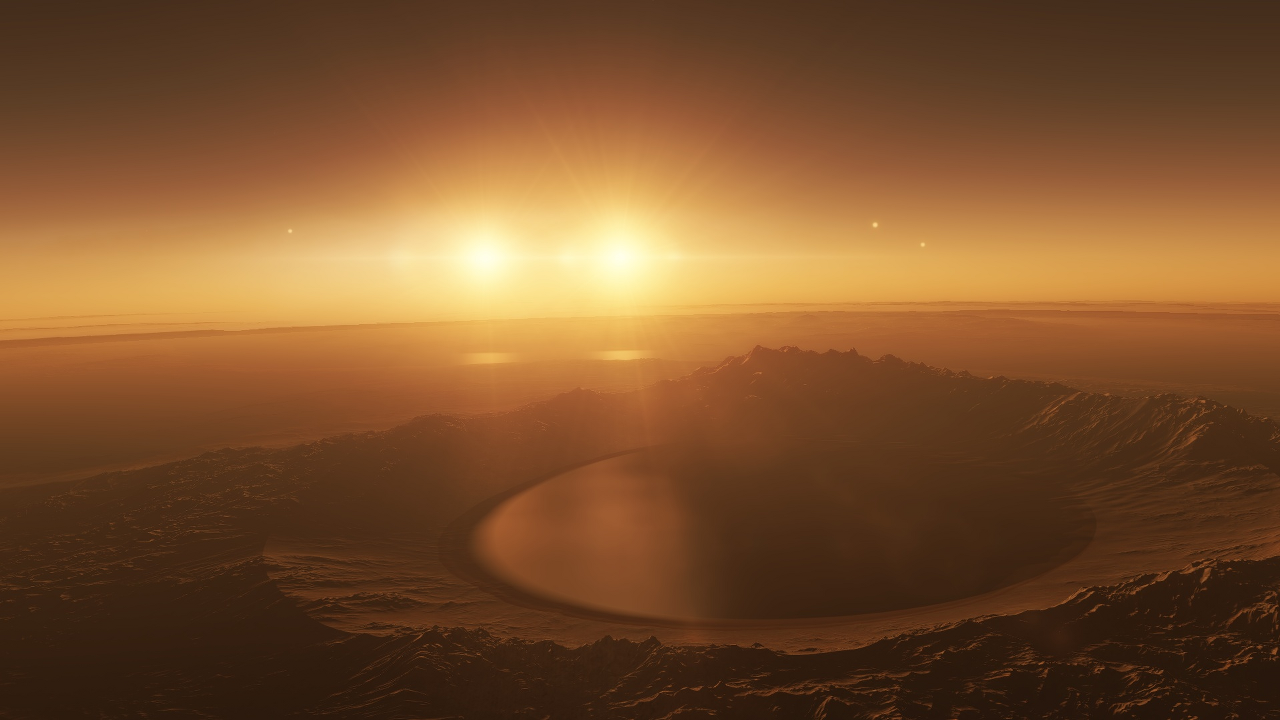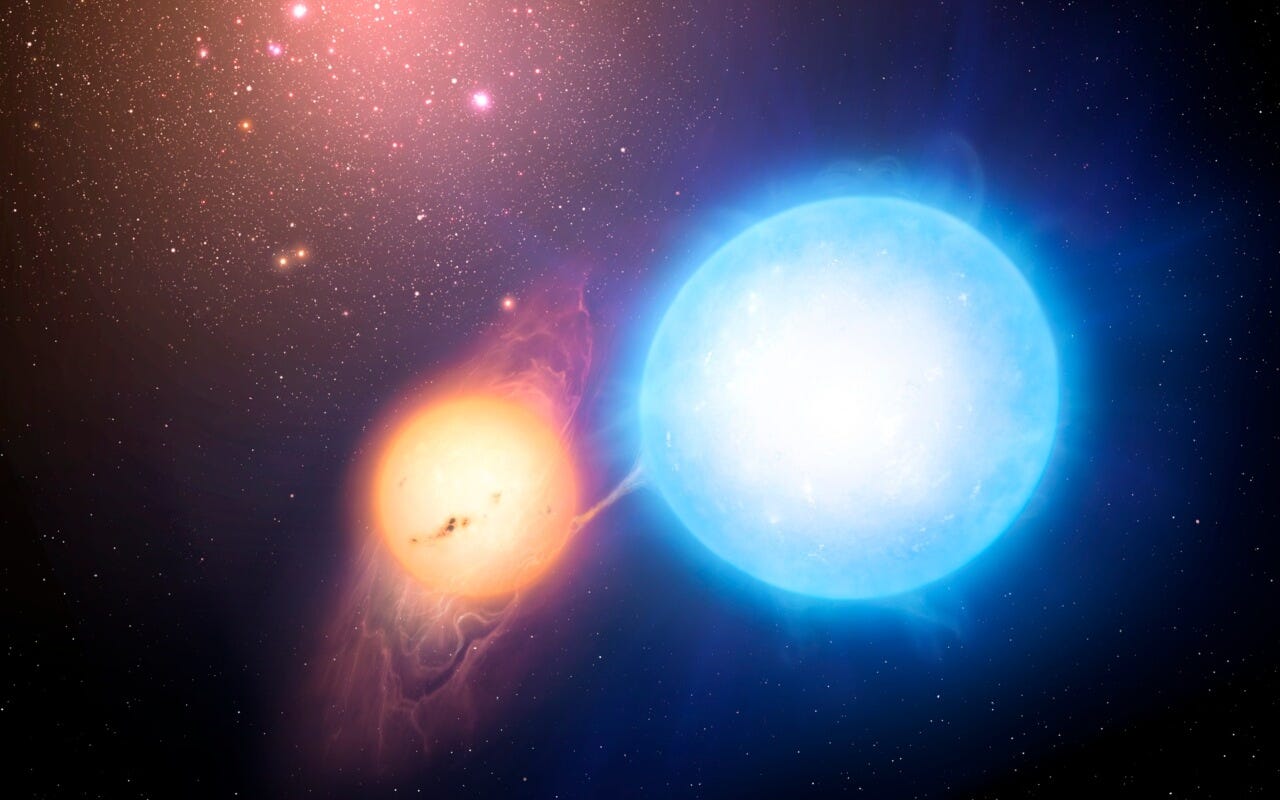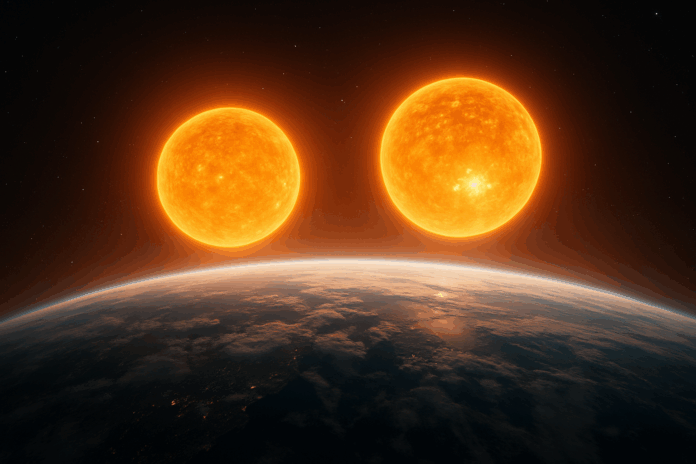What If Earth Had Two Suns? The Fiery Reality Behind the Sci-Fi Fantasy 🌞🌞
Imagine waking up to two sunrises—twin golden orbs painting the sky crimson and tangerine. It sounds like a scene from Star Wars’ Tatooine, but what would this actually mean for life on Earth? Buckle up as we dive into the explosive astrophysics, climate chaos, and cosmic odds of Earth surviving in a binary star system.
🌍 The Allure vs. The Apocalypse: Why Two Suns Aren’t a Paradise
Binary star systems are common—NASA estimates 50–60% of all stars have stellar companions. But Earth’s delicate balance? It wouldn’t last a week.
🔥 Climate Collapse
-
Runaway Greenhouse Effect: Dual solar radiation would vaporize oceans within centuries. As astrophysicist Dr. Neil DeGrasse Tyson warns: “Two suns? Say goodbye to glaciers—and coastlines.”
-
Temperature Swings: Days could hit 80°C (176°F), while eclipses might plunge temps by 40°C in minutes (like Antarctica meets Death Valley).
🌑 Orbital Instability

Earth’s orbit would resemble a “drunken wobble.” Gravitational tugs from two stars could:
-
Hurl us into icy darkness.
-
Spiral us into a star.
-
Flings us out of the system entirely (hello, interstellar space!).
💫 Real-World Example: Kepler-47c
This Neptune-sized exoplanet orbits two stars 5,000 light-years away. It’s a frozen gas giant with wild orbital shifts—proving even giants struggle in binary chaos.
🔭 The Science of Survival: Could Life Adapt?
It’s not all doom—just 99.9% doom. Extreme life might cling on in shadows.
🦠 Extremophiles: Nature’s Backup Plan
Organisms in hydrothermal vents or Antarctic ice (like Deinococcus radiodurans) tolerate radiation and boiling temps. But complex life? Unlikely.
🌌 The “Goldilocks Zone” Shuffle
Habitable zones in binary systems are chaotic:
| System Type | Stable Habitable Zone? | Earth-Like Planet Possible? |
|---|---|---|
| Close Binary Stars | ❌ No | ❌ No |
| Distant Binary Stars | ✅ Yes (if > 10 AU apart) | ⚠️ Rare |
| (Source: NASA Kepler Mission Data) |
🛰️ Proxima Centauri’s Lesson
Our nearest star neighbor has a rocky planet in its habitable zone—but solar flares blast it with 400X Earth’s radiation. Two suns would amplify this 10-fold.
🌟 Engineering a Twin-Sun Earth: Sci-Fi or Future Tech?
Could we hack our way to survival? Hypothetically… maybe.
🛡️ Planetary Shields & Atmospheric Filters

-
Magnetic Field Generators: Artificial magnetospheres to deflect radiation (cost: ~$100 trillion).
-
Sulfur Aerosol Cooling: Inject reflective particles to bounce back heat—a temporary fix with toxic side effects.
🌍 Terraforming Tatooine: A 5-Step Survival Guide
-
Underground Cities: Colonize lava tubes or build sub-surface habitats (like Mars plans).
-
Genetic Engineering: Modify crops for extreme light/UV tolerance (CRISPR sun-resistant wheat?).
-
Orbital Mirrors: Redirect sunlight during eclipses to prevent ice ages.
-
Hydroponic Ecosystems: Soil-less farming under radiation-shielded domes.
-
Constant Monitoring: AI-driven climate models predicting solar flares or orbit shifts.
⚠️ The “Do Not Try This” List
-
No oceans: They’d evaporate or freeze. Water must be recycled underground.
-
No polar ice caps: Say farewell to penguins and sea-level buffers.
-
No predictable seasons: Agriculture becomes a lottery.
🚀 The Cosmic Big Picture: Why This Matters for Humanity
Binary systems aren’t just fun thought experiments—they’re hunting grounds for alien life.

🔍 SETI’s Binary Focus
The Search for Extraterrestrial Intelligence now targets systems like TOI-1338, home to a Saturn-sized circumbinary planet. As Dr. Jane Greaves (Cardiff Univ.) notes: “If life exists, it’s in the shadows—or underground.”
🌏 Earth’s Fragility Exposed
Our stable single-star orbit, magnetic field, and atmospheric balance are rarer than we thought. Of 5,500+ exoplanets discovered, only 24 are Earth-sized in habitable zones—and zero are in stable binary systems.
🔥 Conclusion: A Gorgeous, Uninhabitable Hellscape
Two suns would gift us ethereal double sunsets—and scorched continents, hypercanes, and mass extinctions. Earth’s magic lies in its precision: one star, a magnetic shield, and a moon that steadies our tilt.
🌟 Final Insight: We don’t need twin stars for wonder. As Carl Sagan whispered: “We are star-stuff.” But we’re fragile star-stuff—and that’s why we must protect our pale blue dot.
🚀 Your Turn! If you could design a species to survive on a twin-sun world, what superpower would it need? Share your wildest ideas below! 👇
Key Sources Embedded:
-
Binary star frequency: NASA’s Kepler Mission Archive
-
Kepler-47c data: Nature Journal Study
-
Proxima Centauri flares: ESO Observatory Report
-
TOI-1338 discovery: NASA TESS Coverage
-
Magnetic shield tech: Breakthrough Starshot Initiative


